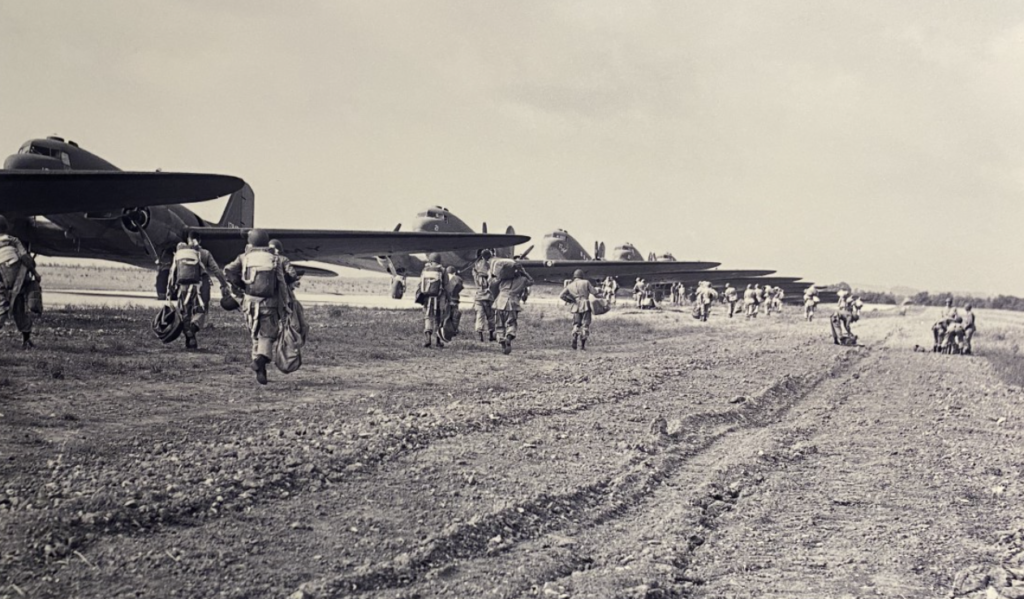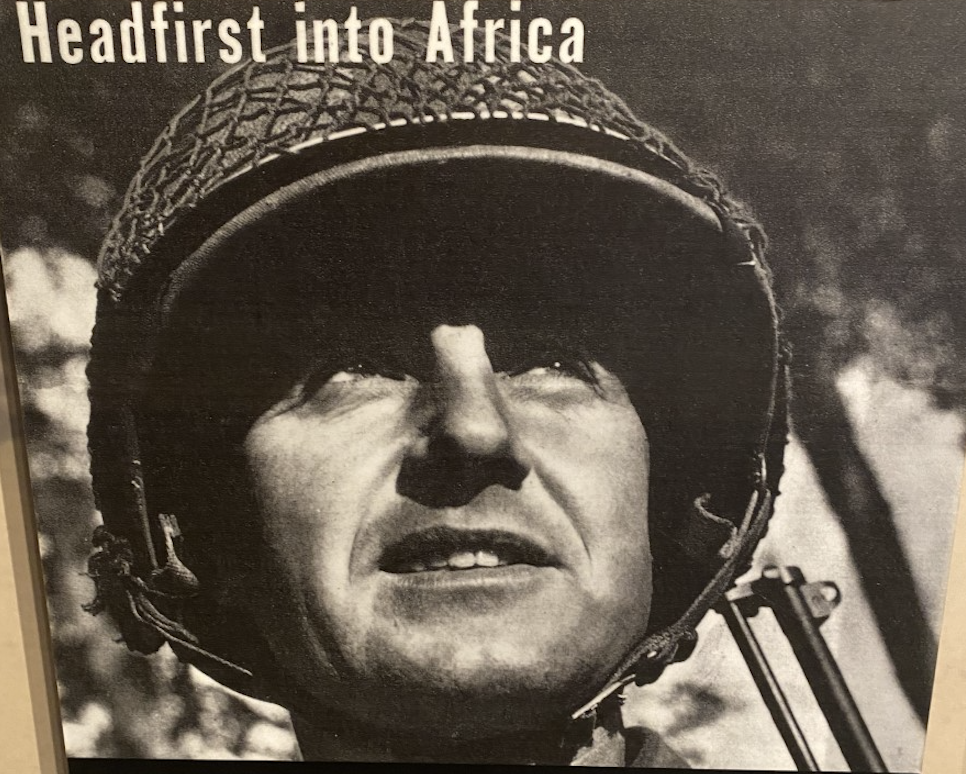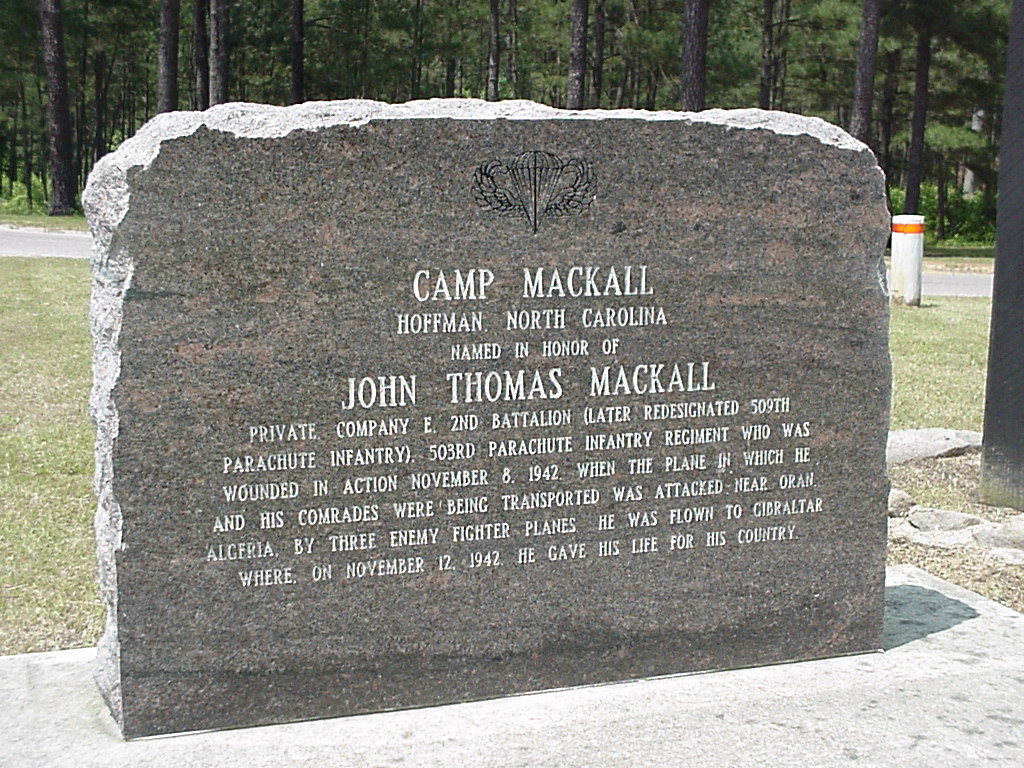The U.S. Army’s First Parachute Combat Assault
The first Allied Airborne assault of World War II was planned as a part of Operation TORCH, the invasion of North Africa on November 8, 1942. The invasion force- 107,000 men strong- was led by Lieutenant General Dwight D. Eisenhower. His mission: neutralize the 105,000- man French army, technically allied with Germany, and prepare to destroy German forces in North Africa.

A critical part of the Allied attack plan required the seizure of airfields- La Senia and Tafaraoui- near the city of Oran by an American Airborne unit, the 2nd Battalion, 503rd Parachute Infantry (later designated the 509th). The 509th’s mission seemed incredible: fly from airfields in Cornwall, England, cross the Bay of Biscay and neutral Spain, and jump in North Africa- a flight of 1,100 miles!
Under the aggressive, “can-do” leadership of Lieutenant Colonel Edson D. Raff, the 509th was thoroughly trained for the mission, but distance and navigation problems blunted the airborne spearhead. Planes were lost or ran out of fuel. Other aircraft air-landed or dropped their Paratroopers far from their objectives.

French fighter planes fired on many who approached the target. Private Tommy MacKall, mortally wounded by the French fire, was later immortalized when the U.S. Army named the Airborne training center near Fort Bragg’s Camp MacKall.

“Night flight to SNAFU” (situation normal, all fouled up) was the way one paratrooper characterized the mission. But the 509th was now in North Africa, and they would fight another day. While the tactical results were disappointing (for reasons beyond the 509th’s control), these initial combat jumps demonstrated the feasibility of employing airborne units to seize critical objectives over significant distances.
On May 13, 1943, the last Axis forces in North Africa surrendered.
Interested in learning more about the beginnings of airborne forces? Come visit the U.S. Army Airborne and Special Operations Museum! Our hours are Tuesday-Saturday, 10:00 AM – 4:00 PM and Sunday, 12:00 – 4:00 PM.



